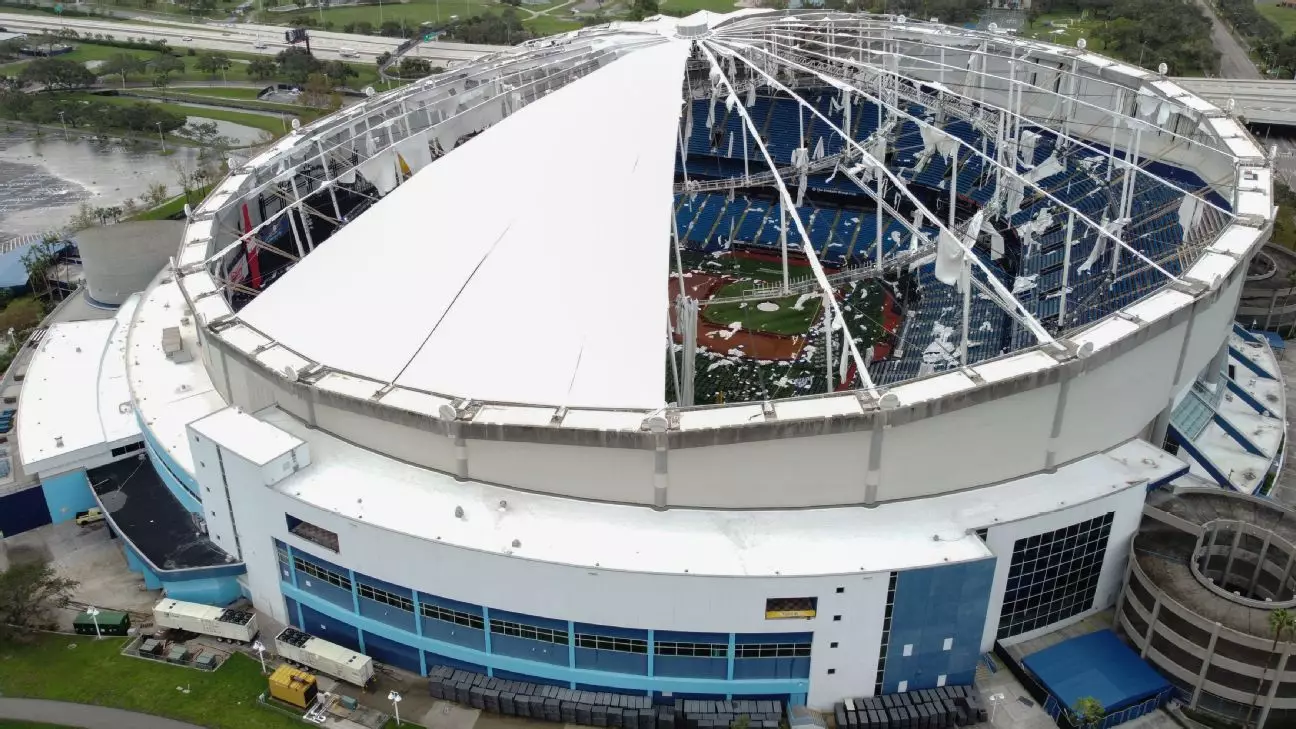The decision taken by the St. Petersburg City Council to invest $22.5 million into repairing Tropicana Field marks a significant chapter in the storied history of the Tampa Bay Rays. The council’s overwhelming 7-1 vote to replace the hurricane-damaged roof is not merely a fiscal obligation; it reflects a deeper commitment to local sports culture amid swirling uncertainties about the team’s future. As the Rays navigate these troubled waters, the question arises: what does this mean for the franchise and the fans who have supported them since the dawn of their existence in 1998?
Legally Bound, Yet Compelled by Passion
The decision is complicated by contractual obligations that the city must honor. As Council member Lissett Hanewicz pointed out, the city is not simply acting on a whim; they are bound by an agreement necessitating repairs. This legal framework illustrates the city’s long-term investment in maintaining the Rays, even as the franchise has sought alternatives in a new stadium near the Trop’s location. The council’s focus on repairing the roof before pursuing other enhancements questions the long-term viability of the Tropicana Field. While the Rays have historically called this venue home, the franchise’s recent withdrawal from a proposed $1.3 billion stadium deal raises eyebrows about their commitment to the community and opens debates about the implications of this investment.
A Complex Project Ahead
City architect Raul Quintana highlighted the scope of work required to restore Tropicana Field, estimating the overall repair costs to reach $56 million. Following the roof installation—set to take around ten months—a barrage of updates will need to follow, including a revamped playing surface and upgrades to audio-visual systems. This complexity is accentuated by the unique membrane roof sourced from Germany and assembled in China. Such international supply chain dynamics are made even more tenuous by potential tariffs, as noted by Quintana, leading to questions of economic efficiency and local job creation.
The necessity for a robust structure capable of withstanding winds of up to 165 mph poses significant engineering challenges and emphasizes the commitment to safety in an area known for its severe tropical weather.
A Franchise in Search of Identity
With the Rays temporarily relocated to Steinbrenner Field in Tampa, their performance thus far—4 wins and 2 losses—offers a glimmer of hope amidst uncertainty. However, the location is not without its challenges. Playing in a venue primarily used for spring training lacks the buzz and fan engagement synonymous with Major League Baseball, and the diminutive seating capacity raises further questions about revenue generation and community engagement.
The ambition to keep the Rays anchored in the local fabric resonates well with Major League Baseball, yet it remains to be seen if this commitment extends into the future. The persistent fear of relocation hovers over the fans, many of whom have invested their emotions and loyalty into the franchise. The decision to sever ties with a lucrative stadium project hints at a precarious balancing act between tradition and modern sporting economics.
Community, Culture, and the Revival of Neighborhoods
The Tropicana Field saga also evokes a larger conversation about urban development and community responsibility. The ambitious plans for the Historic Gas Plant district, which seek to revitalize a neighborhood once rich in culture and history, stand in stark contrast to the realities of modern sports financing. As the Rays navigate contractual obligations, the city must also grapple with its responsibility to ensure that local voices are heard and that residents can benefit from any developments.
In the eyes of council members like Brandi Gabbard, the imperative to prioritize hurricane recovery and local needs is palpable. The socio-economic implications of this decision extend beyond just sports; they remind us that every dollar spent on the Rays also represents investment in the community’s present and future.
The new roof at Tropicana Field may be a sign of evolution rather than stagnation, representing the quest for an identity that honors both the past and paves the way for future possibilities. The forthcoming repairs signify not just obligation but a hope that resonates deeply within the Tampa Bay community. The Rays’ journey from here will ultimately depend on how well they can weave their narrative with that of their supporters and the city around them.

